Ford Puma vs Kia Picanto - Differences and prices compared
Costs and Efficiency:
Looking at overall running costs, both models reveal some interesting differences in everyday economy.
Kia Picanto has a convincingly advantage in terms of price – it starts at 15300 £, while the Ford Puma costs 24800 £. That’s a price difference of around 9471 £.
Fuel consumption also shows a difference: Ford Puma manages with 5.40 L and is therefore slight more efficient than the Kia Picanto with 5.60 L. The difference is about 0.20 L per 100 km.
Engine and Performance:
Under the bonnet, it becomes clear which model is tuned for sportiness and which one takes the lead when you hit the accelerator.
When it comes to engine power, the Ford Puma has a clearly edge – offering 168 HP compared to 68 HP. That’s roughly 100 HP more horsepower.
In acceleration from 0 to 100 km/h, the Ford Puma is convincingly quicker – completing the sprint in 7.40 s, while the Kia Picanto takes 14.60 s. That’s about 7.20 s faster.
In terms of top speed, the Ford Puma performs noticeable better – reaching 210 km/h, while the Kia Picanto tops out at 162 km/h. The difference is around 48 km/h.
There’s also a difference in torque: Ford Puma pulls significantly stronger with 290 Nm compared to 96 Nm. That’s about 194 Nm difference.
Space and Everyday Use:
Beyond pure performance, interior space and usability matter most in daily life. This is where you see which car is more practical and versatile.
Seats: offers more seating capacity – vs .
In curb weight, Kia Picanto is to a small extent lighter – 1124 kg compared to 1316 kg. The difference is around 192 kg.
In terms of boot space, the Ford Puma offers decisively more room – 523 L compared to 255 L. That’s a difference of about 268 L.
In maximum load capacity, the Ford Puma performs distinct better – up to 1283 L, which is about 273 L more than the Kia Picanto.
When it comes to payload, Ford Puma distinct takes the win – 469 kg compared to 332 kg. That’s a difference of about 137 kg.
Who wins the race?
The Ford Puma proves to be is largely superior and therefore becomes our DriveDuel Champion!
Ford Puma is the better all-rounder in this comparison.
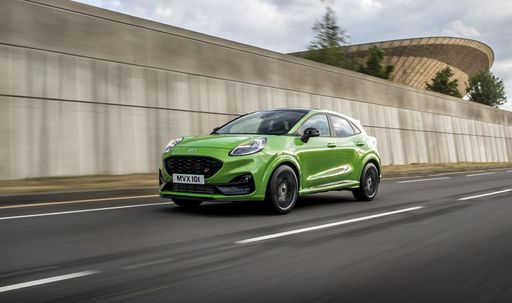 @ Ford Motor Company / Ford Media Center
@ Ford Motor Company / Ford Media Center
Ford Puma
Costs and Consumption
View detailed analysis
Engine and Performance
View detailed analysis
Dimensions and Body
View detailed analysis
Ford Puma
The Ford Puma is a cheeky compact crossover that blends sporty styling with city-friendly practicality, giving drivers a surprisingly fun and composed ride. With clever storage tricks and a lively personality, it’s a smart pick for buyers who want enjoyment without fuss.
details @ Ford Motor Company / Ford Media Center
@ Ford Motor Company / Ford Media Center
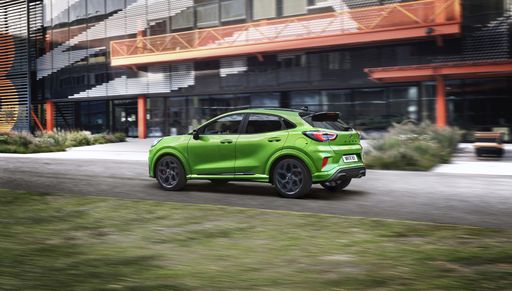 @ Ford Motor Company / Ford Media Center
@ Ford Motor Company / Ford Media Center
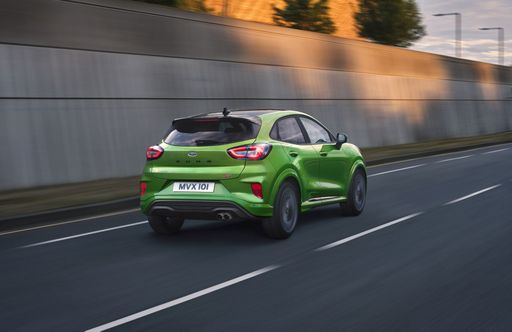 @ Ford Motor Company / Ford Media Center
@ Ford Motor Company / Ford Media Center
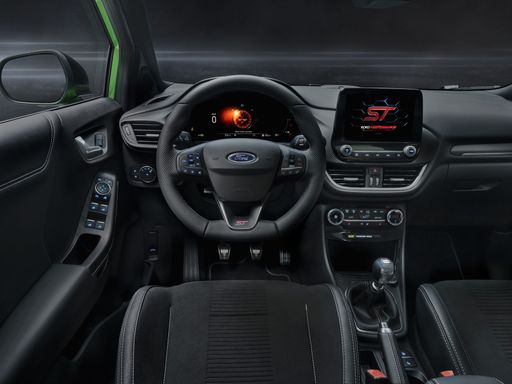 @ Ford Motor Company / Ford Media Center
@ Ford Motor Company / Ford Media Center
Kia Picanto
Kia Picanto is a cheeky city hatch that squeezes surprising style, practicality and a smile-inducing drive into a pocket-friendly package. It’s ideal for urban buyers who want fuss-free running, effortless parking and a car that punches above its class without pretending to be anything it’s not.
details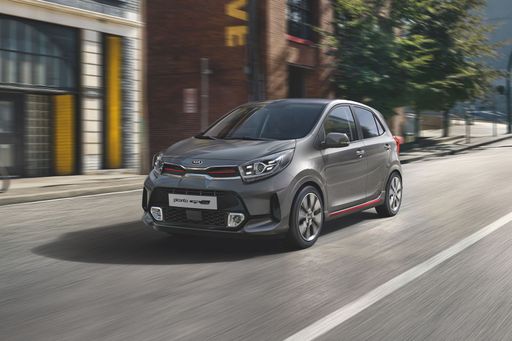 @ Kia Corporation
@ Kia Corporation
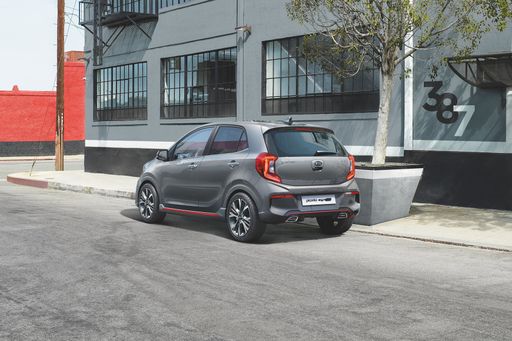 @ Kia Corporation
@ Kia Corporation
 @ Kia Corporation
@ Kia Corporation
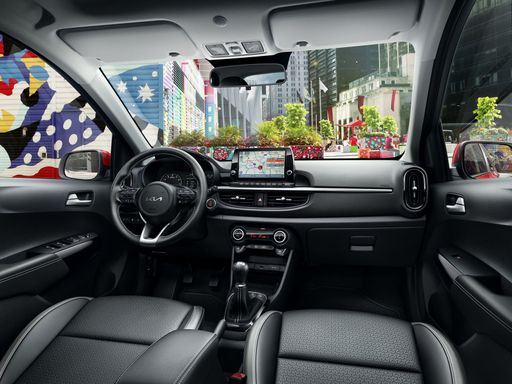 @ Kia Corporation
@ Kia Corporation
 @ Ford Motor Company / Ford Media Center
@ Ford Motor Company / Ford Media Center
|
 @ Kia Corporation
@ Kia Corporation
|
|
|
|
Costs and Consumption |
|
|---|---|
|
Price
24800 - 36300 £
|
Price
15300 - 19300 £
|
|
Consumption L/100km
5.4 - 5.9 L
|
Consumption L/100km
5.6 - 5.9 L
|
|
Consumption kWh/100km
13.1 - 13.9 kWh
|
Consumption kWh/100km
-
|
|
Electric Range
361 - 376 km
|
Electric Range
-
|
|
Battery Capacity
43 kWh
|
Battery Capacity
-
|
|
co2
0 - 135 g/km
|
co2
127 - 135 g/km
|
|
Fuel tank capacity
42 L
|
Fuel tank capacity
35 L
|
Dimensions and Body |
|
|---|---|
|
Body Type
SUV
|
Body Type
Hatchback
|
|
Seats
5
|
Seats
4 - 5
|
|
Doors
5
|
Doors
5
|
|
Curb weight
1316 - 1563 kg
|
Curb weight
1124 - 1131 kg
|
|
Trunk capacity
456 - 523 L
|
Trunk capacity
255 L
|
|
Length
4186 - 4226 mm
|
Length
3605 mm
|
|
Width
1805 mm
|
Width
1595 mm
|
|
Height
1550 - 1555 mm
|
Height
1485 mm
|
|
Max trunk capacity
1216 - 1283 L
|
Max trunk capacity
1010 L
|
|
Payload
367 - 469 kg
|
Payload
253 - 332 kg
|
Engine and Performance |
|
|---|---|
|
Engine Type
Electric, Petrol MHEV
|
Engine Type
Petrol
|
|
Transmission
Automatic, Manuel
|
Transmission
Manuel, Automatic
|
|
Transmission Detail
Reduction Gearbox, Manual Gearbox, Dual-Clutch Automatic
|
Transmission Detail
Manual Gearbox, Automated Manual
|
|
Drive Type
Front-Wheel Drive
|
Drive Type
Front-Wheel Drive
|
|
Power HP
125 - 168 HP
|
Power HP
68 HP
|
|
Acceleration 0-100km/h
7.4 - 9.8 s
|
Acceleration 0-100km/h
14.6 - 17.2 s
|
|
Max Speed
160 - 210 km/h
|
Max Speed
160 - 162 km/h
|
|
Torque
170 - 290 Nm
|
Torque
96 Nm
|
|
Number of Cylinders
3
|
Number of Cylinders
3
|
|
Power kW
92 - 124 kW
|
Power kW
50 kW
|
|
Engine capacity
999 cm3
|
Engine capacity
998 cm3
|
General |
|
|---|---|
|
Model Year
2025
|
Model Year
2025
|
|
CO2 Efficiency Class
A, D
|
CO2 Efficiency Class
D
|
|
Brand
Ford
|
Brand
Kia
|
Is the Ford Puma offered with different drivetrains?
The Ford Puma is offered with Front-Wheel Drive.
The prices and data displayed are estimates based on German list prices and may vary by country. This information is not legally binding.
